2022 Snapshot of Maternal and Child Health Nurses in Wisconsin
Laura Koch, MPH1, Paula Bizot1,2, MS, RN, Susan Zahner1,2, DrPH, RN, FAAN
1Wisconsin Public Health Research Network 2UW – Madison School of Nursing
Background
- Wisconsin has some of the worst maternal health outcomes in the United States. During 2006 – 2010, non-Hispanic Black women were 5.0 times more likely to die from pregnancy-related causes than non- Hispanic White women1.
- In 2016 -17, nearly all (97%) pregnancy-related deaths in Wisconsin were preventable2.
- In the last decade, 11 rural Wisconsin hospitals have stopped delivering babies. Maternity care deserts in the US have increased by 5% since 2020. Maternity care deserts are associated with a lack of adequate prenatal care and an increased risk of maternal death.6-8.
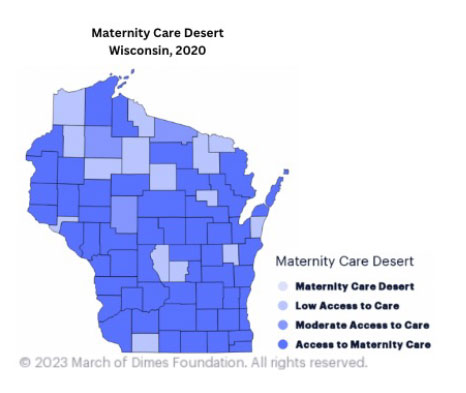
- Healthcare providers play a unique role in reducing maternal health disparities. Frontline nurses play a key role in ensuring the safety and well-being of mothers and infants3-5.
- The aim of this study was to gain a comprehensive understanding of the landscape of the MCH nursing workforce in Wisconsin and provide valuable insights into how it may be influencing the provision of care to pregnant people, mothers, and infants.
Methods
- Registered nurses (RNs) seeking to renew their licenses in Wisconsin have been required by state statute (WSS106.30) to complete a workforce survey at the time of renewal since 2010.
- Data from the 2022 Wisconsin RN Workforce Survey were used to understand the current Wisconsin maternal and child health nurse (MCHN) workforce.
- For the purpose of this analysis, MCHNs were operationally defined as RNs who reported having specialized knowledge and/or experience of two or more years in labor and delivery, neonatal, maternal-child health, obstetrics/gynecology, or women’s health.
- Data examined included demographics, education, training, pay, specialization, career decisions, and the impacts of COVID-19.
- Results were compared and contrasted with overall RN workforce characteristics as well as Wisconsin demographics.
Results
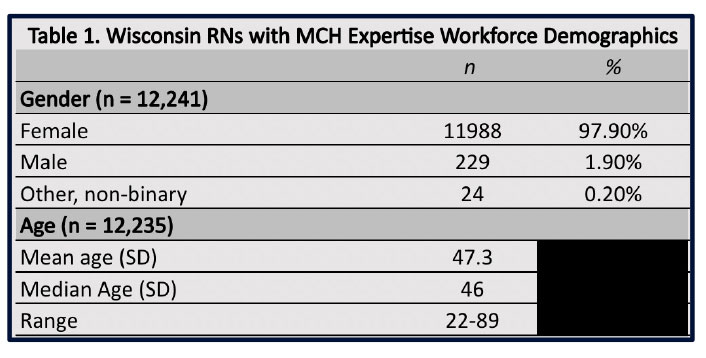
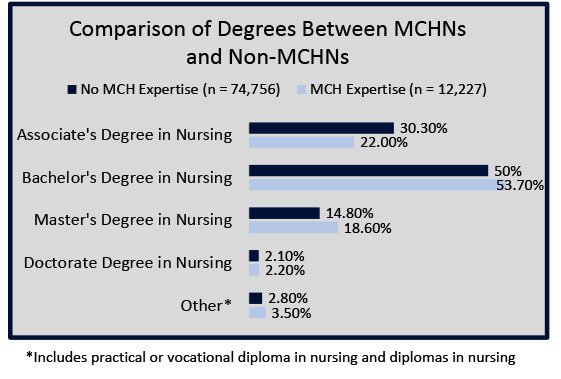
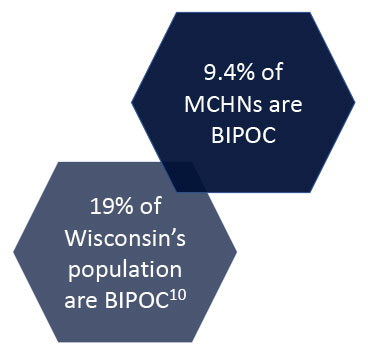
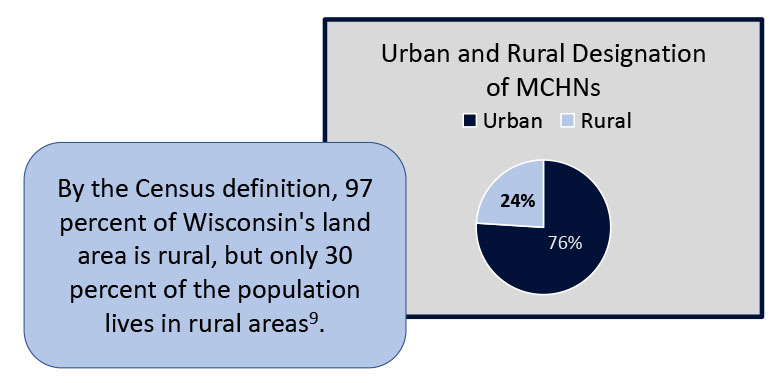
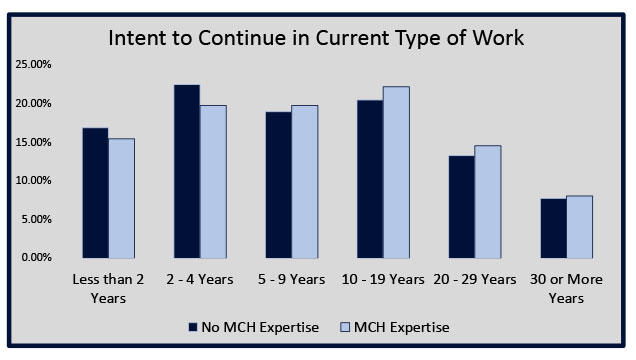
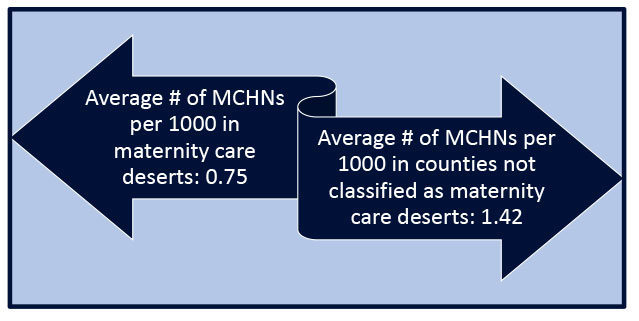
Discussion
• Nurses play a pivotal role in maternal and child health, especially when it comes to patient advocacy. They serve as the voice of birthing people, mothers, infants, and families, ensuring their rights, preferences, and concerns are acknowledged and addressed.
• An important discovery that needs to be highlighted is that less than 10% of MCHNs are BIPOC while 19% of Wisconsin’s population is BIPOC. Diversity within the nursing workforce is essential as it provides opportunities to provide quality care to patients, especially to those who have experienced or are currently experiencing disparities caused by racism within the healthcare field 11.
• We expected the number of MCHNs in maternity care deserts to be low because of the lack of obstetric care in those counties. In 2020, about 55,000 women lived in a county without a single obstetric provider in Wisconsin8. The number of MCHNs per 1000 in maternity deserts is almost half that of counties with access to maternity care.
• Increasing the presence of maternal and child health healthcare in rural counties is essential as 30% of Wisconsin’s population resides in a rural area, which covers a disproportionately large geographic area with only 24% of MCHNs working there.
• Across the United States, about 2 in 3 counties (61.5%) designated as maternity care deserts are rural 12.
• In Wisconsin, 4 out of 5 counties (80%) designated as maternity care deserts are rural 13.
• Overall, nurses are essential and well-positioned to have a positive impact on the reduction of maternal health disparities in Wisconsin. By investing in MCHNs, especially those in rural areas, and increasing diversity in the MCHN workforce, we can strengthen their ability to address maternal health disparities and promote equitable outcomes for all birthing people, mothers, and infants in Wisconsin.
References & Acknowledgements

Acknowledgments
Thank you to the Wisconsin Public Health Research Network, Jeff Henriques, PhD, the Zahner Research Team and all of the nurses who completed the Wisconsin RN Workforce Survey.
